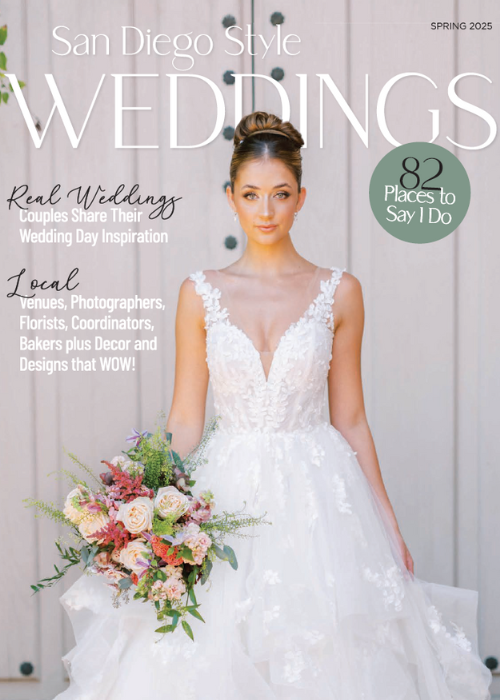Helpful Tips for Stocking the Bar and Keeping Your Guests Happy
By: Kristen Castillo
Try a signature cocktail
We love this fabulous Southwestern cocktail called Floral Bloom.
It’s made of:
- 1.5 oz. Montelobos, 0.75 oz.
- Lillet Rose, 0.75 oz.
- Strawberry Simple Syrup, 1.5 oz.
- Fresh Pink GrapefruitJuice, 1.5 oz.
- Soda Water.
Combine ingredients (except soda water) and shake well. Strain over coupe glass. Garnish with flower.
Packages
Bar Package
A venue with a kitchen (i.e., a restaurant, hotel, or resort), will typically offer its own bar package. They might charge per bottle, per head, or per hour.
No Bar Packages or Serve-Only Packages
If your reception is taking place at a museum or a stand-alone event space, you can usually bring in your own caterer, but often you’ll have to use their preferred beverage company. You can buy your own alcohol, but you have to use their bartending service.
First Decisions
When the time comes to select the type of beverage service you would like, it is helpful to know the options that are available. Consider your guest list, style of reception, and your budget to determine the style of beverage and/or bar service you will offer the guests.
- Open bar versus cash bar. There is no argument here. Your guests are your guests and should not be asked to pay for anything.
- A full bar provides a complete selection of alcoholic and non alcoholic beverages. For example, guests will be able to select mixed drinks, wine or sodas at their pleasure.
- A soft or limited bar provides non alcoholic beverages. However, many soft bars now include beer and wine, lighter alcoholic fare.
- A dry house is a beverage service that does not serve alcohol.
- A house bar consists of lower-priced brands the venue or caterer typically serves.
- A premium bar is stocked with higher-end brand-name selections.
- A deluxe or top-shelf bar serves top-of-the-line liquor.
Bar Options
The following suggestions are some of the more popular ways couples “stock their bars.” Select a beverage plan that fits your budget and review and discuss it with your caterer and/or location manager to formulate a plan that works for everyone involved.
- Serve a wine instead of champagne. Rather than serving champagne or sparkling wine for the toasts, let guests toast with what they are already drinking. If you know your guests are not drinkers or you are having a weekday or morning wedding when alcohol consumption is usually less, have a consumption bar (where you pay per drink) rather than purchasing the site’s bar package. If you are offering hard liquor, offer house brands rather than premium brands.
- Serve champagne punch, as it is fairly light in terms of alcohol, and people are not as likely to pound down glass after glass.
- Try a fully-stocked open bar for the first hour of the reception. Then switch to a soft bar with wine, beer and non alcoholic drinks.
- Try an open bar for the first hour of the reception. This will get things off on the right foot and many brides feel this fulfills their responsibility. This is a popular “trend,” but strictly speaking breaks the laws of etiquette.
HOW MUCH WILL THEY DRINK?
- 100 Guests x
- 5-Hour Reception = 500 drinks based on one drink per person per hour.
A Well Stocked Bar
(based on a guest list of 100)
- BEER: 4-5 cases
- SODAS: 4-5 cases
- BOTTLED WATER: 1-2 cases
- VODKA: 6 liters
- GIN: 2 liters
- WHISKEY: 2 liters
- SCOTCH: 3 liters
- BOURBON: 1-2 liters
- RUM: 3 liters
- TEQUILA: 2 liters
- DRY VERMOUTH: 2 bottles
- SWEET VERMOUTH: 2 bottles
- CHAMPAGNE: 1 case
- RED WINE: 1 case
- WHITE WINE: 2 cases










